
If your app is slow, crashes under load, or can’t scale when users grow, you have a performance problem. That’s where performance testing comes in. Performance testing is the process of checking how fast, stable, and scalable a software application is under different conditions. It helps teams find and fix performance issues before users ever experience them.
There are many types of performance testing in software testing, and each type focuses on a different goal, whether it’s checking how much traffic your system can handle (load testing), how it behaves under extreme pressure (stress testing), or how it performs over time (endurance testing).
1. What is Performance Testing?
Performance testing is a type of non-functional testing that evaluates how a system performs under specific workloads. It helps determine the speed, scalability, reliability, and stability of an application under expected (and sometimes unexpected) conditions.
In simple terms, performance testing answers questions like:
- Will the website handle 10,000 users at the same time?
- How fast does the system respond when under pressure?
- What’s the maximum number of users the application can serve before it slows down or crashes?
Read more >>> Functional Testing | Definition – Types – Benefits – Best practices
2. Advantages and Disadvantages of Performance Testing
Understanding the benefits and limitations of performance testing can help businesses allocate resources effectively and avoid common pitfalls.
2.1 Advantages performance testing
- Improves user experience: Fast-loading applications reduce user frustration and bounce rates, especially important in customer-facing apps like e-commerce sites or SaaS platforms.
- Reveals system bottlenecks: Identifies performance issues like memory leaks, slow database queries, and poorly optimized code before they reach production.
- Supports scalability planning: Helps estimate how much load your system can handle and what infrastructure you need to support future growth.
- Increases system reliability: Ensures your system remains stable under heavy usage, reducing the risk of crashes during peak traffic (e.g., Black Friday, product launches).
- Saves cost in the long run: Catching performance issues early is cheaper than dealing with outages or customer complaints after deployment.
- Boosts business reputation: A fast, responsive app strengthens your brand and keeps users coming back.
2.2 Disadvantages performance testing
- Time-consuming setup: Creating realistic test environments, data, and scenarios can take significant time and effort—especially for large or complex systems.
- Requires expertise: Performance testing tools often require scripting, monitoring, and analysis skills. Non-experts may misinterpret results or miss critical issues.
- Cost of tools and infrastructure: Some tools (like LoadRunner) are expensive, and cloud-based load testing may incur additional infrastructure costs.
- Difficult to replicate real-world traffic completely: No matter how good your test is, it’s hard to perfectly mimic all user behaviors, network conditions, or device types.
- Can be overlooked in Agile teams: In fast-paced environments, performance testing may be skipped or rushed, leading to last-minute surprises in production.
Read more >>> Integration Testing in Software Testing | Definition – Types – Process
3. 6 Types of performance testing
There’s no one-size-fits-all approach to performance testing. Different types of tests are used to uncover different types of issues. Understanding these will help you choose the right strategy for your application.
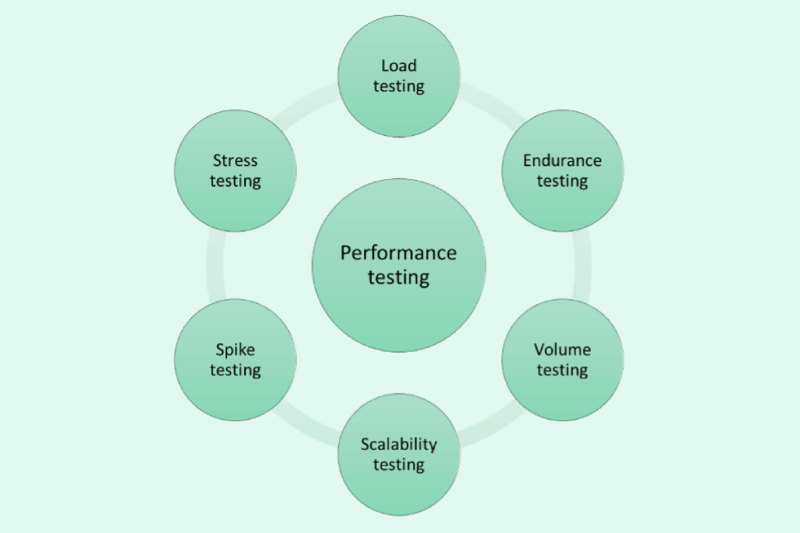
Here are the most common types of performance testing in software testing:
3.1 Load testing
Load testing checks how your system performs under expected user traffic. It helps determine the maximum operating capacity of an application and identify performance bottlenecks before they affect real users.
When to use it:
- Before launch to ensure the app handles normal user loads
- During feature updates to make sure performance isn’t degraded
- Best tools: Apache JMeter, LoadRunner, k6
3.2 Stress Testing
Stress testing pushes your system beyond its limits to see how it behaves under extreme conditions. The goal is to identify the breaking point and how well the system recovers from failure.
When to use it:
- To prepare for traffic spikes (e.g., Black Friday, viral campaigns)
- To evaluate recovery procedures
- Best tools: Gatling, JMeter, BlazeMeter
Read more >>> 19 Types of Manual Testing in Software Testing [Update 2025]
3.3 Endurance Testing (Soak Testing)
Endurance testing checks how the system performs over an extended period under normal load. It helps detect issues like memory leaks, slowdowns, or performance degradation over time.
When to use it:
- For apps that run continuously (e.g., streaming platforms, banking systems)
- Before long-term deployments
- Best tools: LoadRunner, NeoLoad
3.4 Spike Testing
Spike testing simulates sudden increases in user load to test how the system reacts. It evaluates if your app can handle sharp, unexpected traffic bursts without crashing.
When to use it:
- If your product might experience sudden user jumps (e.g., after a campaign)
- To test auto-scaling systems
- Best tools: k6, JMeter
3.5 Scalability Testing
Scalability testing determines how well your application can scale up (or out) as more users or data are added. It helps you plan for future growth.
When to use it:
- When planning infrastructure upgrades
- When user base is growing steadily
- Best tools: NeoLoad, Gatling
3.6 Volume Testing
Volume testing (also known as flood testing) checks system performance when handling large amounts of data. It helps ensure databases, file storage, and queues can handle heavy data volume efficiently.
When to use it:
- For data-heavy apps like CRMs, analytics platforms, or inventory systems
- To validate database performance and indexing
- Best tools: JMeter, LoadRunner
4. Top performance testing tools in 2025
Choosing the right tool can make or break your performance testing efforts. Here are some of the best performance testing tools in 2025 that developers and QA teams trust:
4.1 Apache JMeter
- Overview: Apache JMeter is one of the most well-known open-source tools in the testing ecosystem. Initially designed for web application testing, it has expanded over time to support various services and protocols. Thanks to its wide adoption and flexibility, it remains a go-to tool for many teams.
- Key features: JMeter supports multiple protocols such as HTTP, HTTPS, FTP, SOAP, JDBC, and more. Test plans can be easily created using its intuitive GUI or exported to XML for script-based execution. With strong community backing, plugins, and documentation, JMeter is highly extensible.
- Best for: Ideal for testing APIs, web applications, and databases. It works well for both beginners and advanced users who want deep control over their test scenarios.
- Why choose it: It’s free, extensible, and integrates smoothly into CI/CD pipelines using Jenkins, GitLab CI, or other automation tools. It’s particularly helpful for budget-conscious teams looking for enterprise-grade testing capabilities.
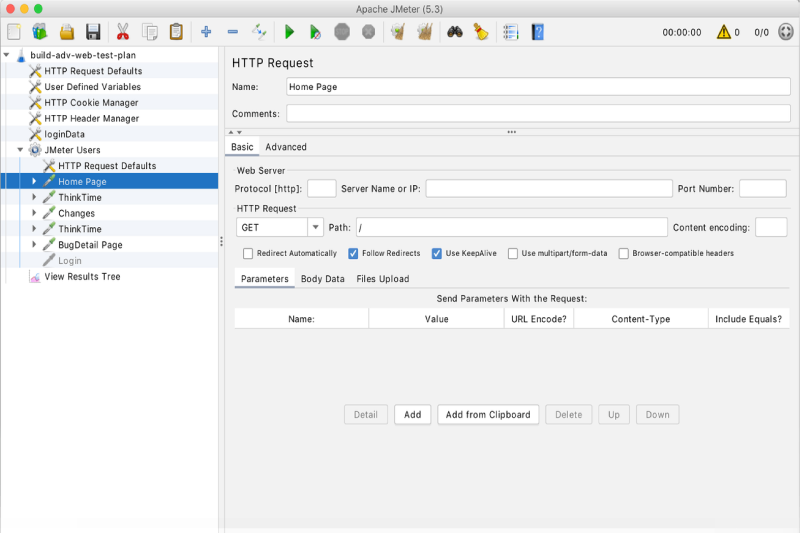
4.2 LoadRunner
LoadRunner by Micro Focus is a commercial performance testing suite favored by large organizations for its robustness and professional support. It’s engineered to simulate thousands of virtual users to mimic real-world user activity under different conditions.
- Key features: It supports over 50 protocols including Web, Java, Citrix, SAP, Oracle, and more. LoadRunner provides advanced analytics, real-time performance monitoring, and integrations with tools like Jenkins, Azure DevOps, and Git. Its controller and analyzer tools are extremely powerful for test management and deep diagnostics.
- Best for: Best suited for testing complex enterprise applications that demand accuracy, scalability, and precision, especially in banking, telecom, and healthcare industries.
- Why choose it: LoadRunner is ideal for organizations that need a full-fledged testing solution with strong technical support, high scalability, and detailed insights into system behavior under load.
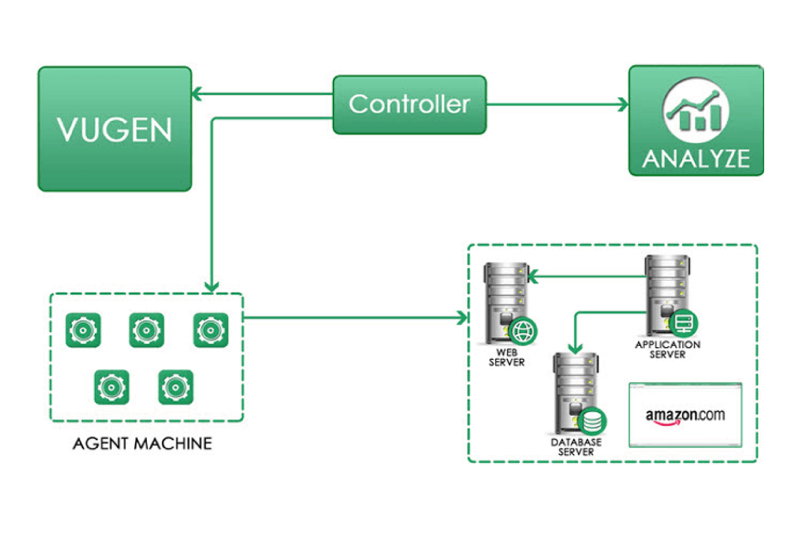
4.3 NeoLoad
- Overview: NeoLoad by Tricentis is a next-gen performance testing platform built with continuous testing in mind. It enables testers and developers to simulate a wide range of user behaviors and test applications at scale.
- Key features: It allows realistic simulation of user behavior, provides real-time analysis, and supports on-premise and cloud-based load generation. NeoLoad integrates well with CI/CD tools and provides automated test design and maintenance features.
- Best for: Perfect for Agile and DevOps teams who need to perform frequent performance tests with minimal manual effort. It’s especially good for applications undergoing rapid changes.
- Why choose it: NeoLoad is automation-friendly, supports API testing, and simplifies collaboration across teams with shared dashboards and reports. It saves time by minimizing script maintenance.
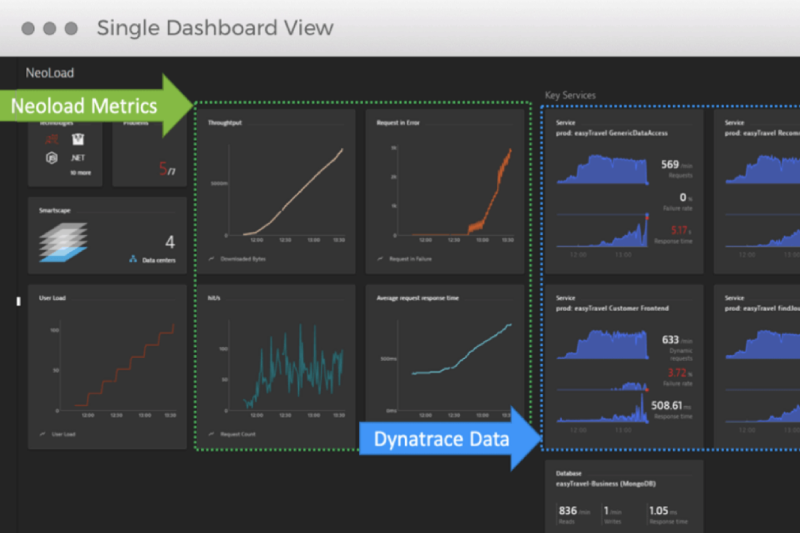
4.4 Gatling
Gatling is an open-source, developer-centric performance testing tool known for its high performance and expressive DSL based on Scala. It enables developers to write performance scenarios in code, which provides more flexibility and reusability.
Key features: Gatling offers real-time metrics, load simulation, and automatic reports with graphs and visual insights. It integrates well with Maven, Gradle, Jenkins, and GitHub Actions.
Best for: Ideal for web applications where performance scenarios need to be defined in code. It’s a strong choice for development teams comfortable with scripting.
Why choose it: It’s highly efficient, code-centric, and suitable for teams looking for continuous performance testing in their CI/CD pipeline. Its non-GUI approach appeals to code-oriented testers.
4.5 k6
k6 is a modern, open-source load testing tool designed for developers and built for the cloud era. It offers a scripting API based on JavaScript, making it accessible to a broad range of testers and engineers.
- Key features: k6 excels at API load testing, supports cloud-based execution, and provides out-of-the-box integration with Grafana, InfluxDB, and Prometheus. It also supports distributed load testing and infrastructure-as-code workflows.
- Best for: Best for testing microservices, REST APIs, and cloud-native applications. Its modern scripting and deployment model aligns well with DevOps and SRE practices.
- Why choose it: It’s lightweight, highly scriptable, and cloud-ready. k6 empowers teams to run scalable tests and track results using developer-centric tools like Grafana dashboards.
5. Performance testing methodology
A clear methodology ensures your performance tests are effective and deliver actionable results. Here’s a typical step-by-step process:
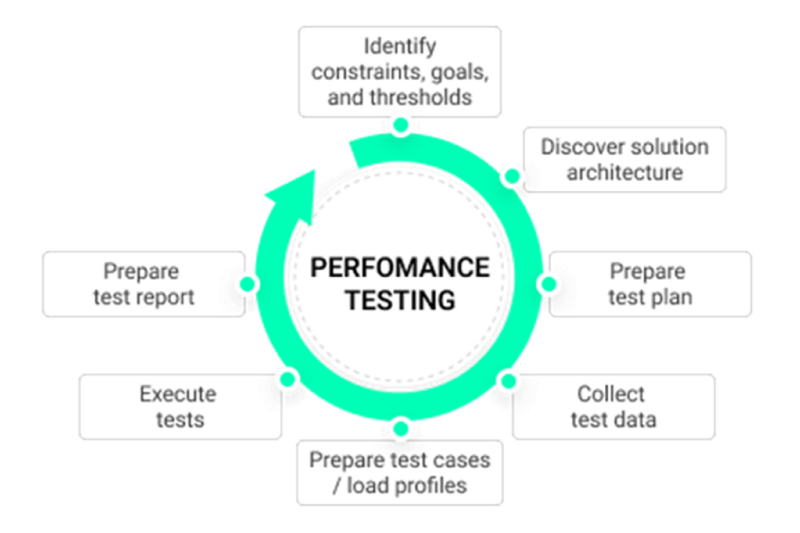
5.1 Planning and design
Define objectives: Start by identifying what you want to learn from your tests. Are you testing for speed, reliability, or scalability? Define clear goals such as verifying response time under load or ensuring system uptime during peak hours.
Set success criteria: Establish quantitative benchmarks—what’s the maximum acceptable response time, error rate, or throughput? These criteria help you judge whether your application meets user expectations.
Identify scenarios: Focus on the most critical user flows: logins, searches, checkouts, etc. Consider high-traffic periods or usage spikes like sales events to replicate real-world load
Choose metrics: Select key metrics to track, such as average response time, 95th percentile latency, error rates, CPU/memory usage, and network I/O. These metrics guide both your analysis and system tuning.
5.2 Test environment setup
Mirror production: The closer your test environment mimics production, the more accurate your results. Match the server specs, OS, database configurations, and third-party services as much as possible.
Configure hardware/software: Ensure servers and containers have adequate resources. Use monitoring tools to track hardware usage and ensure test traffic doesn’t bottleneck due to misconfiguration.
Prepare test data: Create or import datasets that reflect the actual usage—user profiles, transaction history, product catalogs, so that test results mirror production behavior.
5.3 Test execution
Create test scripts: Write scripts that simulate real user behavior—navigating pages, submitting forms, querying databases. Use parameterization to cover multiple data points and user types.
Run tests: Execute load tests incrementally (e.g., ramp-up from 10 to 1000 users) to identify the performance threshold and avoid system crashes during sudden surges.
Monitor systems: Track CPU, memory, disk I/O, response times, and network bandwidth. Use APM (Application Performance Monitoring) tools like New Relic or Datadog for real-time diagnostics.
5.4 Analysis and reporting
Interpret results: Analyze your metrics in context. Is a 1-second delay acceptable for under 1000 concurrent users? Compare results against your success criteria to determine system readiness.
Identify bottlenecks: Dig into logs and performance graphs to locate inefficient queries, memory leaks, or overloaded services. Look for spikes in latency or resource usage under stress.
Report findings: Create clear and visual reports with charts, tables, and summaries. Highlight not just problems, but also patterns, trends, and areas for improvement.
5.5 Tuning and retesting
Optimize system: Based on your findings, update code (e.g., optimize SQL queries), adjust configurations (e.g., increase thread pools), or scale infrastructure (e.g., add servers/load balancers).
Rerun tests: After changes, rerun the same test scenarios to confirm improvements. This step helps you validate fixes and determine whether new bottlenecks have emerged.
Repeat: Performance tuning is iterative. Regular testing during development and pre-release cycles ensures long-term system stability and scalability.
6. Conclusion
Performance testing is essential to ensure software applications run fast, stable, and scalable under real-world conditions. By understanding the types of performance testing in software testing, from load and stress testing to endurance and scalability testing teams can identify potential issues before users do.
Choosing the right tools like Apache JMeter, LoadRunner, NeoLoad, Gatling, or k6 makes testing more efficient and tailored to your project’s needs. Following a structured performance testing methodology ensures you plan, execute, analyze, and improve effectively.
Whether you are a developer, QA engineer, or IT manager, mastering performance testing helps you deliver reliable software that meets user expectations and stands up to growing demands.




